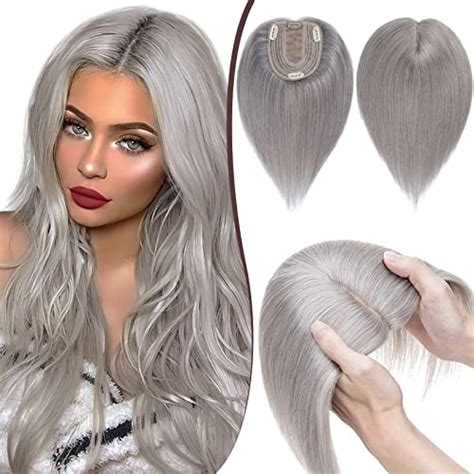Understanding the Prevalence and Impact of Hair Loss
According to the American Hair Loss Association, over 10 million people in the United States suffer from hair loss. This condition can have a significant emotional and social impact, affecting self-esteem, confidence, and overall well-being. Hair loss can be caused by a variety of factors, including genetics, hormonal imbalances, medical conditions, and certain medications.

Breaking Down the Types of Hair Toppers
Hair toppers, as a solution for hair loss, come in various types to cater to different needs and preferences. These include:
-
Base Type:
- Monofilament: Creates a natural appearance by allowing hair to pass through a sheer base material.
- Lace: Offers a more flexible base, allowing for a seamless blend with natural hair.
- Silk: Provides a luxurious feel and can be customized to match natural hair texture and color.
-
Hair Type:
- Human Hair: Natural and long-lasting, allowing for styling and coloring.
- Synthetic Hair: Affordable and easier to care for, but may have a less natural appearance.
-
Coverage:
- Partial: Covers a specific area of hair loss, such as the crown or temples.
- Full: Covers the entire head, providing maximum volume and coverage.
Benefits of Hair Toppers for Hair Loss
Hair toppers offer numerous benefits for individuals experiencing hair loss:
- Instant Volume and Coverage: They add instant volume and fullness to thinning hair, effectively concealing any bald spots or areas of sparse hair growth.
- Natural-Looking Appearance: Advanced hair topper manufacturing techniques create incredibly natural-looking results that seamlessly blend with existing hair.
- Increased Confidence and Self-Esteem: Covering hair loss can significantly boost confidence, self-esteem, and overall well-being.
- Flexibility and Convenience: Hair toppers can be easily attached and removed, allowing for versatility and convenience.
- Low Maintenance: Compared to hair transplants or hair extensions, hair toppers require minimal maintenance and can be cared for with regular brushing and washing.
How to Choose the Right Hair Topper
Choosing the right hair topper is essential for achieving the desired results. Here are some factors to consider:
- Type of Hair Loss: Determine the specific areas of hair loss and the desired coverage.
- Color and Texture: Match the hair topper to your natural hair color and texture to ensure a seamless blend.
- Size and Fit: Measure your head to determine the appropriate topper size and ensure a comfortable and secure fit.
- Material and Construction: Consider the base material and hair type based on personal preferences and lifestyle.
- Budget: Hair toppers come in a range of prices, so set a realistic budget to guide your selection.
Tips and Tricks for Using Hair Toppers
- Secure Attachment: Use clips or adhesives to ensure a firm attachment, preventing slipping or movement.
- Blending: Blend the edges of the hair topper with your natural hair using a teasing comb or hairspray.
- Styling: Style the hair topper as desired, using bobby pins, sprays, or mousse to hold it in place.
- Maintenance: Brush and wash the hair topper regularly to maintain its appearance and longevity.
- Consultation: Consult a professional hair stylist or cosmetologist for personalized advice and assistance with choosing and applying a hair topper.
Conclusion
Hair toppers offer a discreet and effective solution for individuals experiencing hair loss. With a wide range of options available, there is a hair topper to meet every need and preference. By understanding the types, benefits, and proper use of hair toppers, you can regain confidence, embrace your natural beauty, and enhance your overall well-being.
